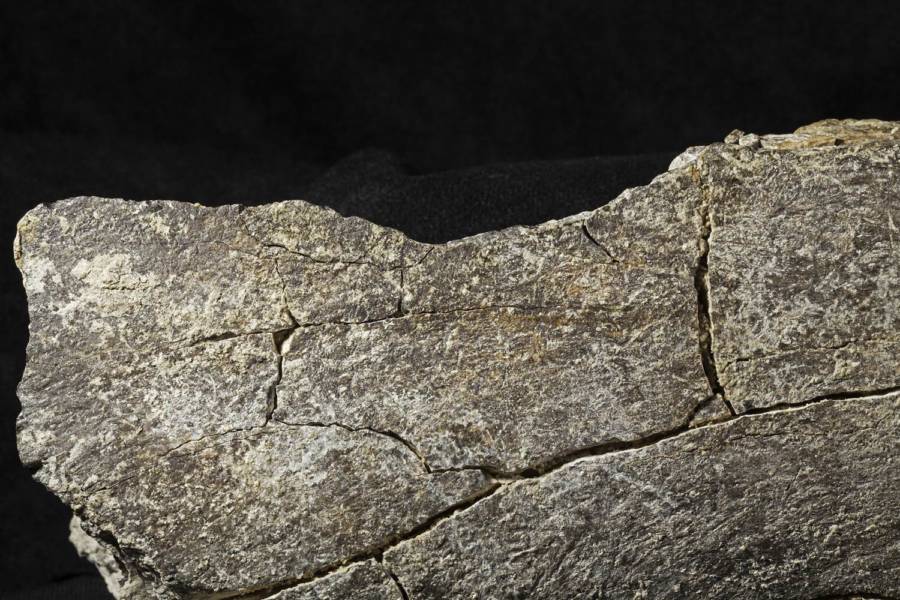Bones unearthed in California suggest that humans lived there 130,000 years ago.

Tom Deméré/San Diego Natural History MuseumThe uncovered mastodon femur exhibiting the crack believed to be caused by impact from human tools.
New evidence unearthed in California suggests that early humans may have lived in North American approximately 130,000 years ago — which is about 115,000 years earlier than scientists had previously thought.
Paleontologists digging in San Diego discovered mastodon bones that appear to have been broken apart with stone tools, which were themselves also found nearby, according to the study published in Nature. Because of the presence of the tools, the ways in which the bones were smashed, and the fact that one mastodon tusk had been shoved into the ground upright, the researchers concluded that this could only have been done by humans.
This wasn’t a revolutionary finding until the researchers also used uranium dating to discover that the bones in question were approximately 130,000 years old — despite the fact that all widely accepted evidence up until now showed that the first humans lived in North America just 15,000 years ago.
Such an extraordinary rewriting of human history has immediately sparked debate within the scientific community.
“I was astonished, not because it is so good but because it is so bad,” University of Washington archaeologist Donald K. Grayson told The New York Times, explaining that the study didn’t conclusively rule out non-human explanations for the smashing of the bones.
“They present evidence that the broken stones and bones could have been broken by humans. But they don’t demonstrate that they could only be broken by humans,” added University of Arizona archaeologist Vance T. Holliday.

Nevertheless, the study’s authors claim that particular scratch and impact patterns on the mastodon bones are consistent with those found at other similar dig sites at which scientists have conclusively proven that humans were present.
While some geologists still contend that the bones could have been broken by pressure from overlying sediment, most scientists do at least agree that the new study’s dating methods were accurate. So while we can be sure that the remains in question were indeed 130,000 years old, we may not yet be completely sure that humans were actually there at that time.
If humans were there, we know very little as of yet about just what sort of humans they were.
“It poses all sorts of questions,” study co-author Thomas A. Deméré told The New York Times. “Who were these people? What species were they?”
Given that current evidence shows that the earliest modern humans migrated out of present-day Africa just 50,000-80,000 years ago, any humans who would have lived in North America some 50,000 years earlier would not be related to any current group of humans in existence today.
Because these claims are so extraordinary, the study’s authors are inviting other researchers to scrutinize their work in hopes that initial disbelief might give way to the realization that some of our core ideas about human history are very wrong.
“My first reaction on reading this paper was ‘No. This is wrong. Something’s wrong,'” University of Southampton stone tool expert John McNabb told NBC, before adding, “If it does turn out to be true, it changes absolutely everything.”
Next, see the recent reports indicating that the first humans in North America didn’t come from the north, as previously thought. Then, read up on the discovery of the remains of America’s first colonists recently found in Florida and the true history of who discovered America.




